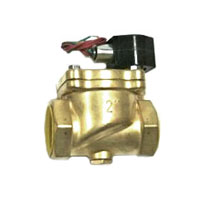Types of Sump Pumps and Switches
Sump pumps and their trusty companions, the switches, work together to keep your basement or crawl space safe from watery woes. Read on to learn more!
Sump Pump Types:
- Submersible Pumps: These workhorses live and breathe underwater! They sit in the sump pit directly, using an electric motor to power an impeller that forces water out through a discharge pipe. Submersibles are efficient, quiet, and ideal for most residential applications.
- Pedestal Pumps: These prefer dry land! The motor sits atop a pedestal outside the sump pit, connected to the pump impeller by a long shaft. Pedestal pumps are less prone to clogging but can be louder and take up more space.
Sump Pump Switch Types:
- Tethered Float Switches: The classic! A buoyant float attached to the pump by a tether rises with the water level, eventually pulling a lever or activating a micro-switch to turn on the pump. Simple and reliable, but prone to snags and require space for the tether’s movement.
- Vertical Float Switches: These sleek operators use a rod and float mechanism directly within the sump pit. As the water rises, the rod pushes against a lever to activate the switch. More accurate and discreet than tethered floats, but may require specific sump pit dimensions.
- Diaphragm Switches: These pressure-sensitive marvels utilize a diaphragm that flexes with rising water, pushing against a switch internally. No moving parts in the water, making them clog-resistant and suitable for dirty or sandy water.
- Electronic Switches: High-tech heroes for the sump pump world! These rely on sensors like pressure sensors or ultrasonic sensors to detect water level changes and activate the pump. Offer precise control and advanced features, but can be pricier and require proper installation.
Choosing the Right Combination:
The ideal duo for your sump pump system depends on your needs and preferences. Consider factors like:
- Sump pit dimensions and configuration.
- Water level fluctuation and expected debris levels.
- Desired noise level and budget.
- Need for advanced features like automatic backup or alarm systems.
Consulting a qualified plumber or sump pump specialist can help you choose the perfect sump pump and switch combination for your specific situation, ensuring a dry and worry-free basement for years to come
Why Choose Water Line Controls
All of our water level controls and water level control systems are assembled right here in the U.S.A. where we monitor every step of the process.
0

